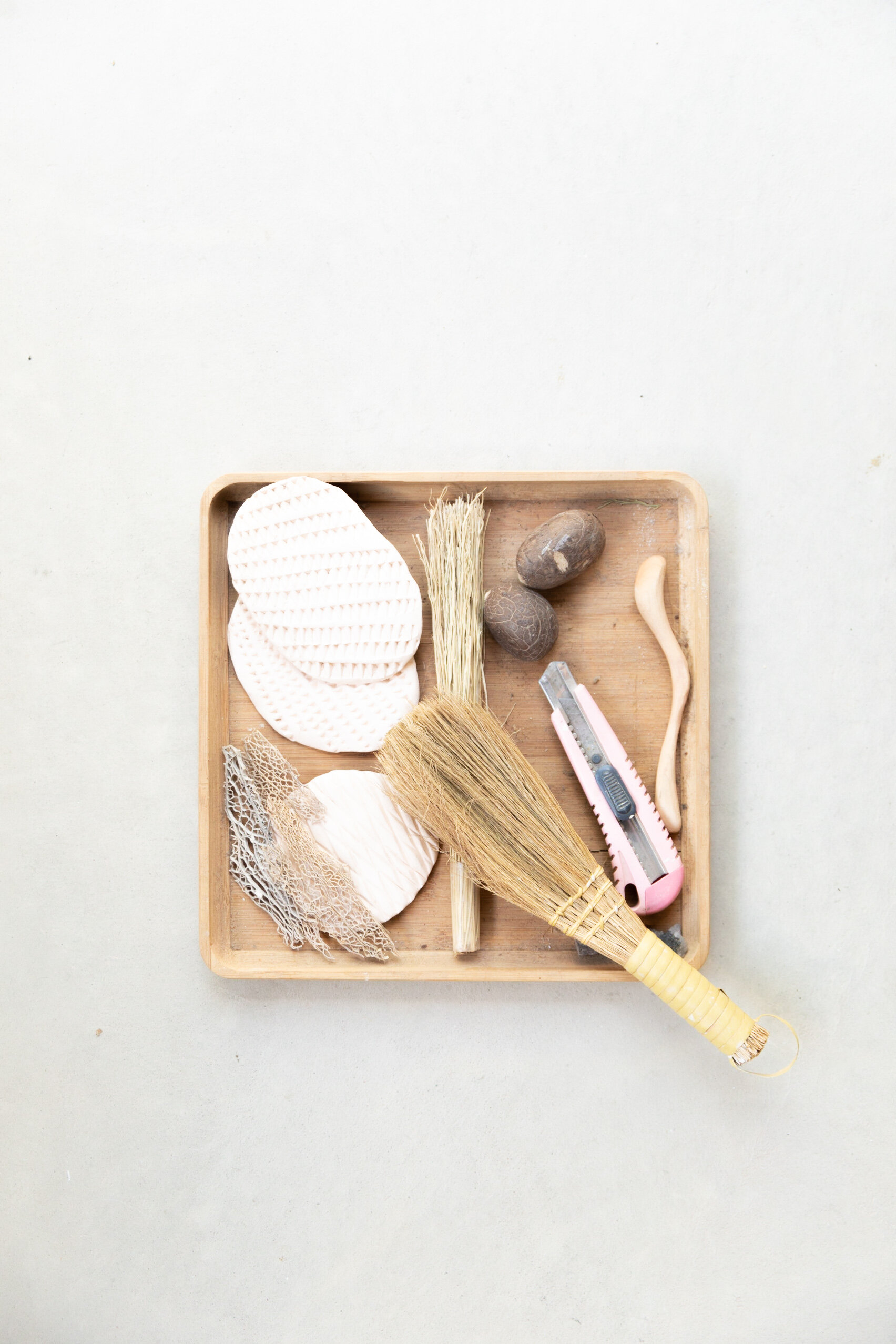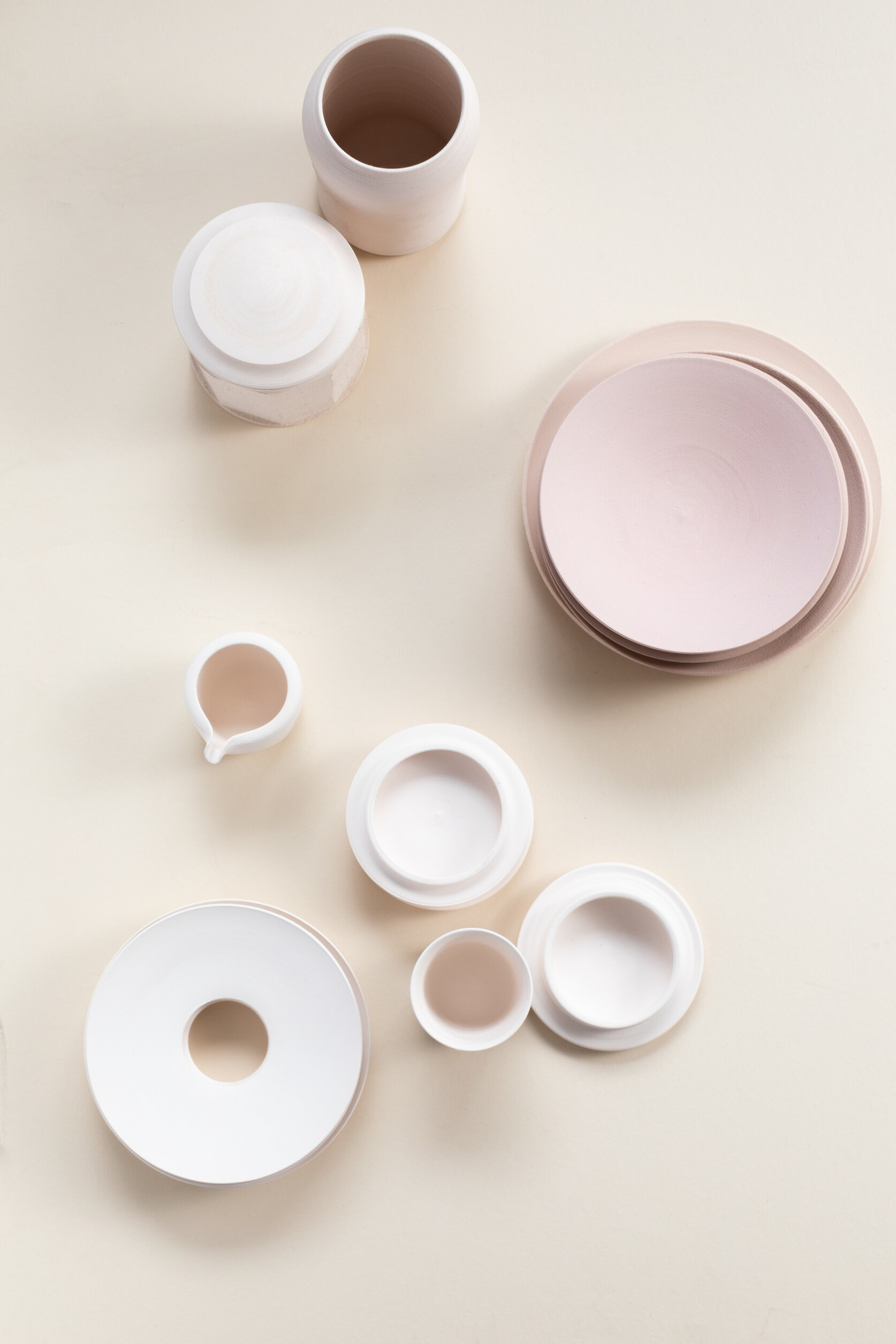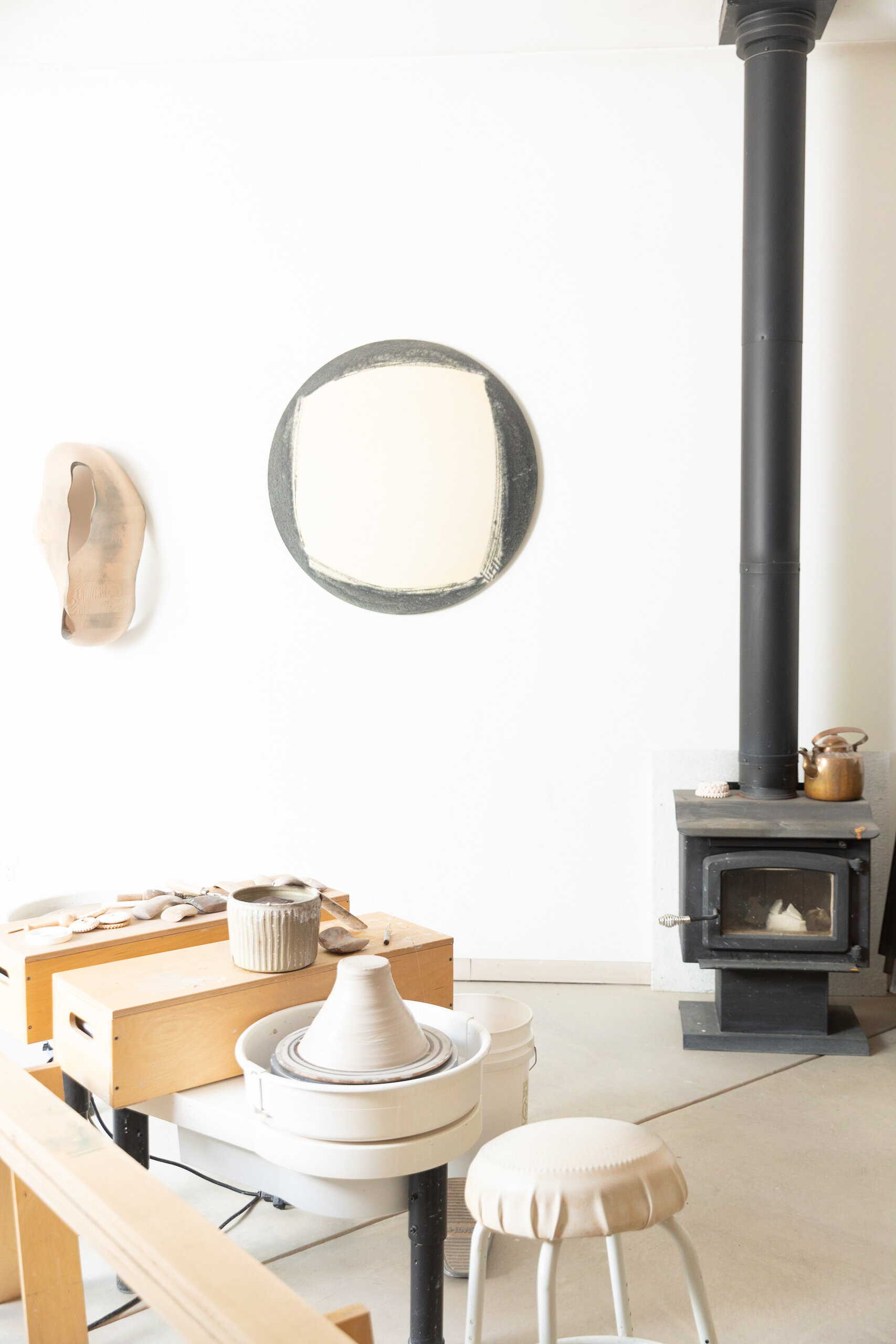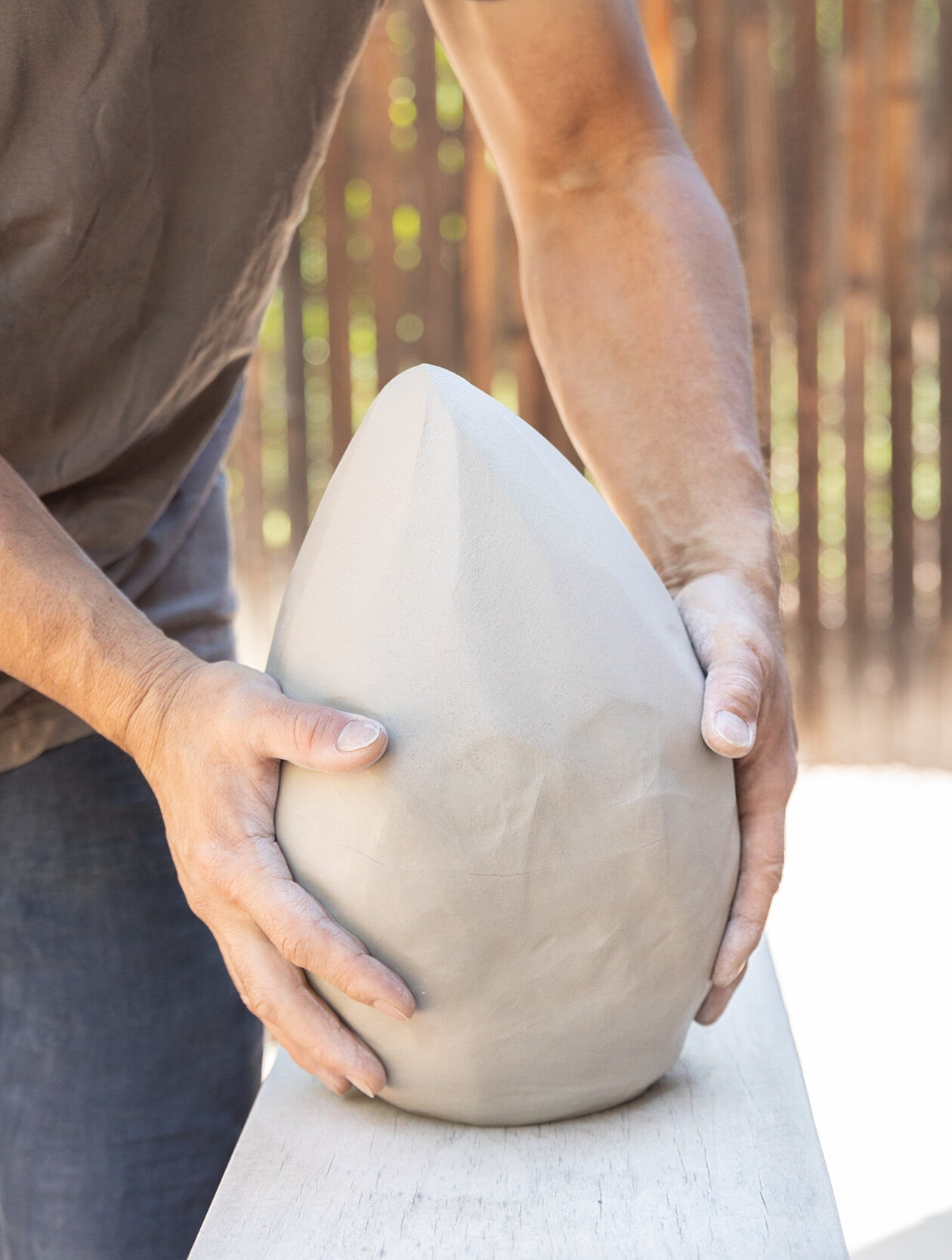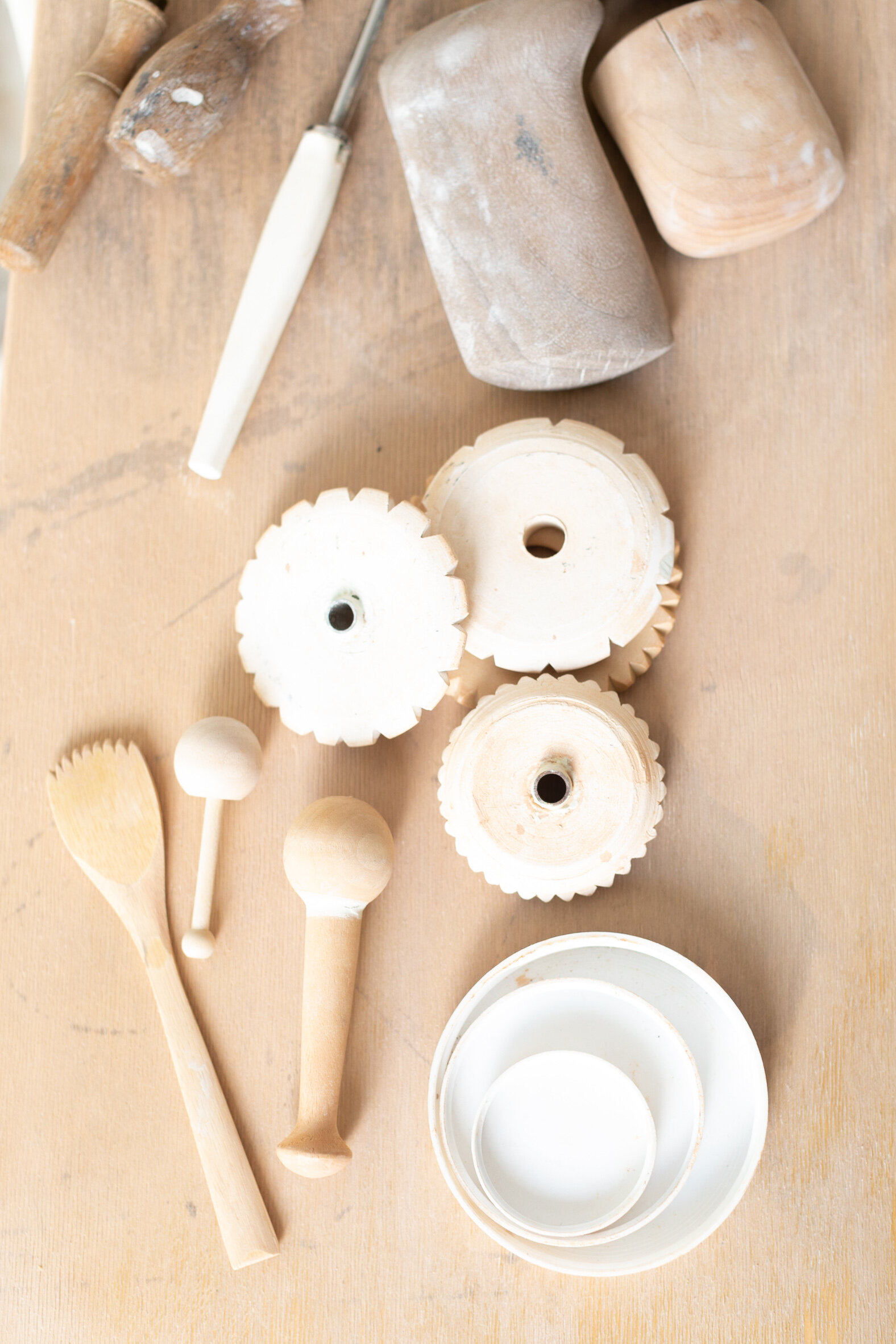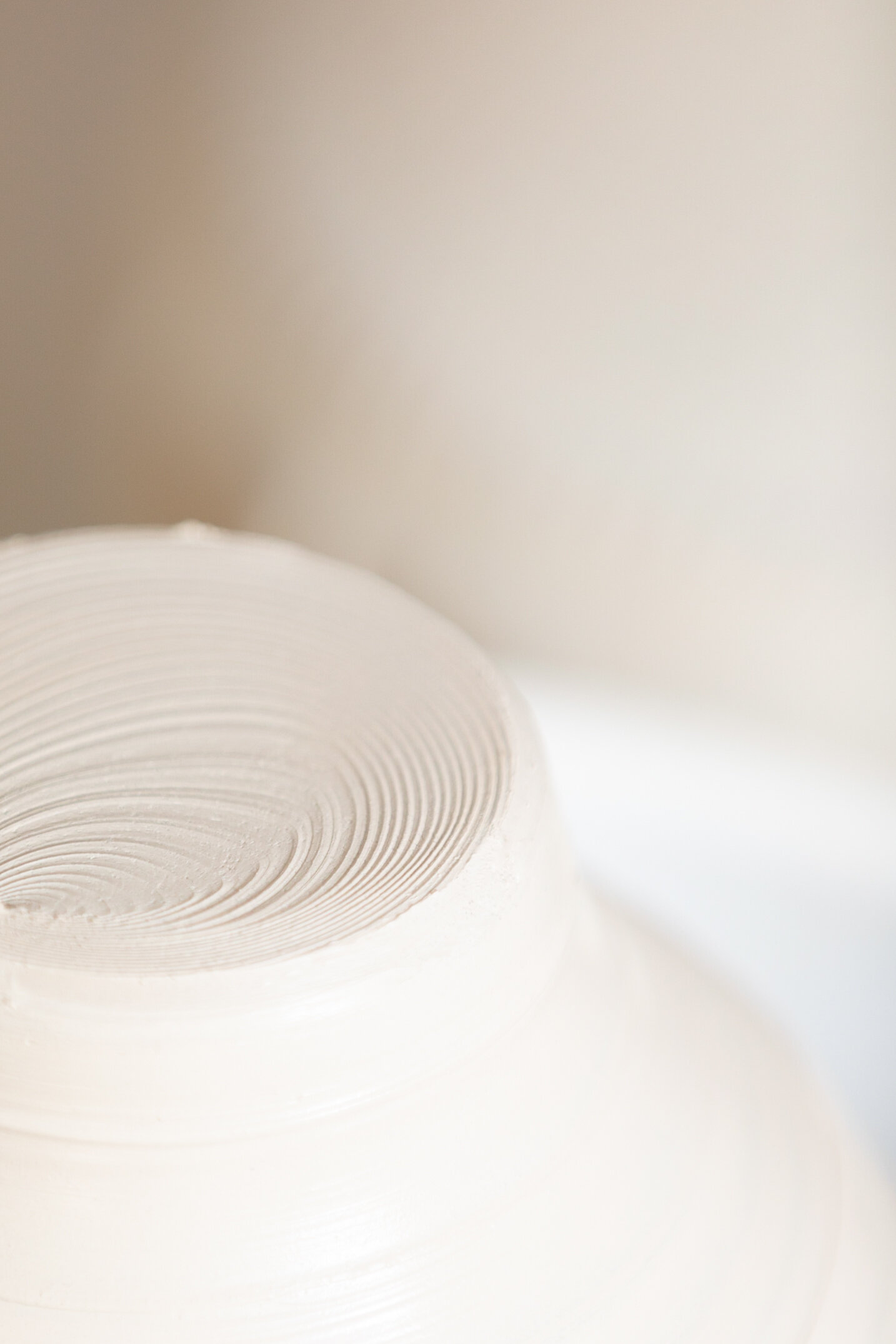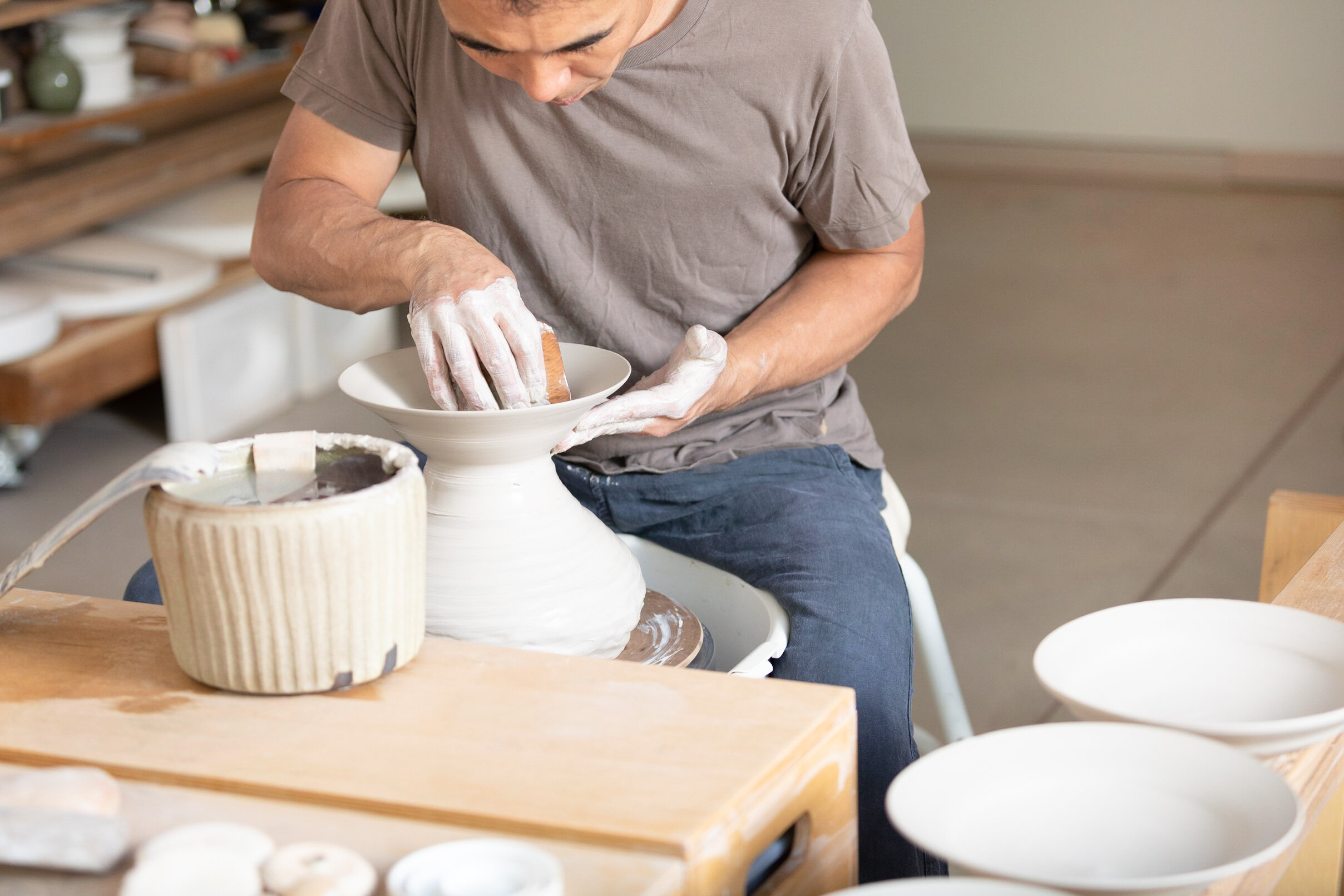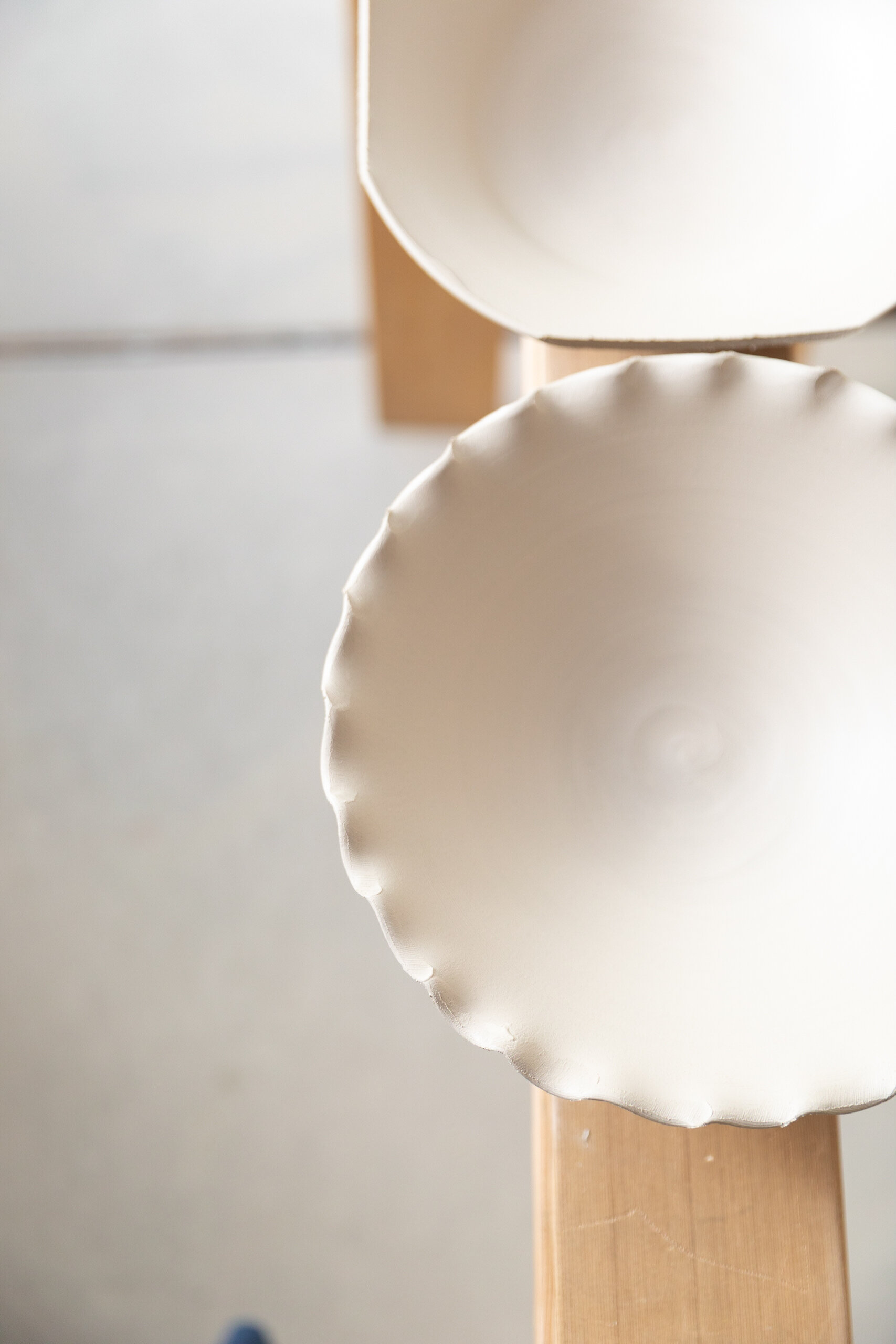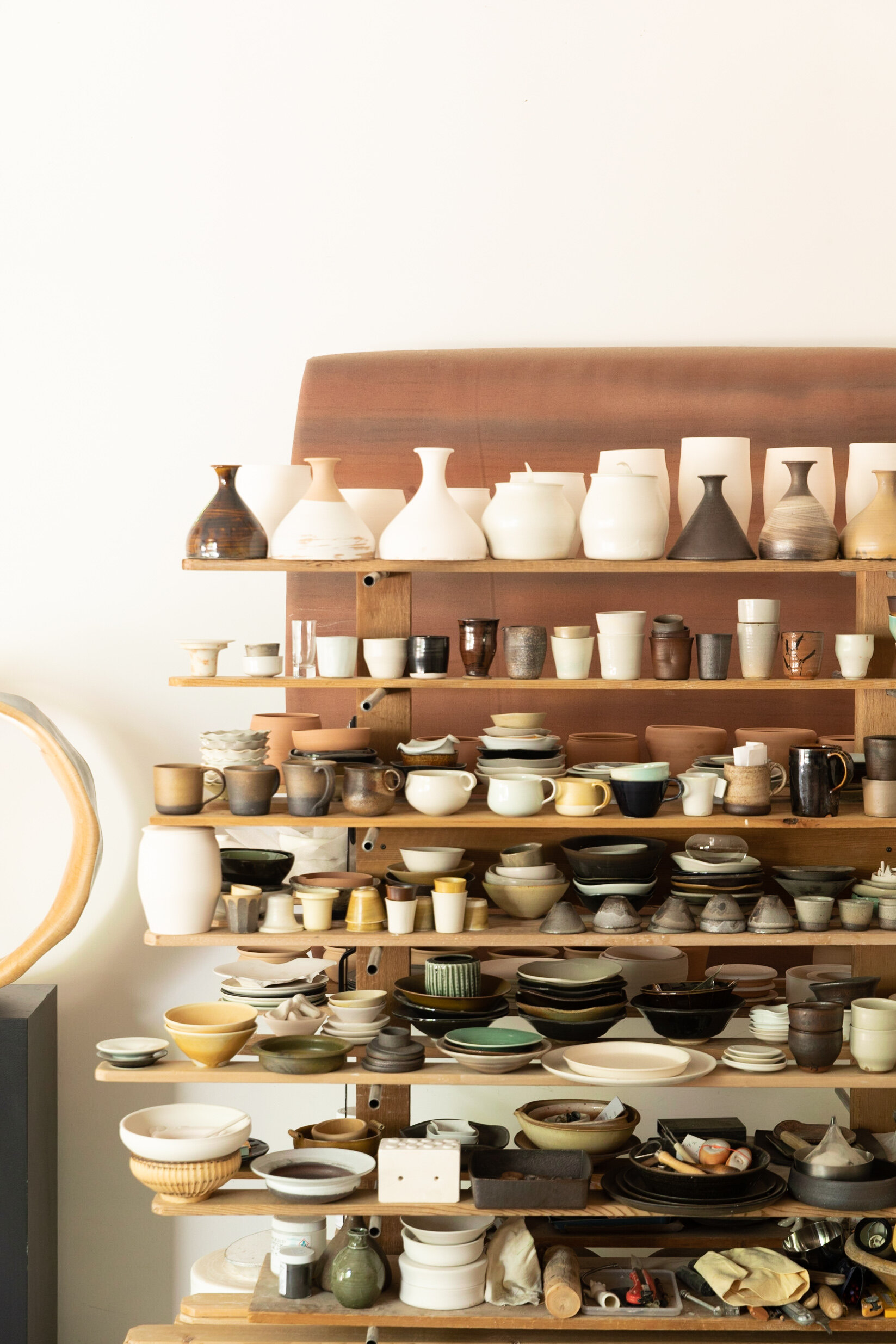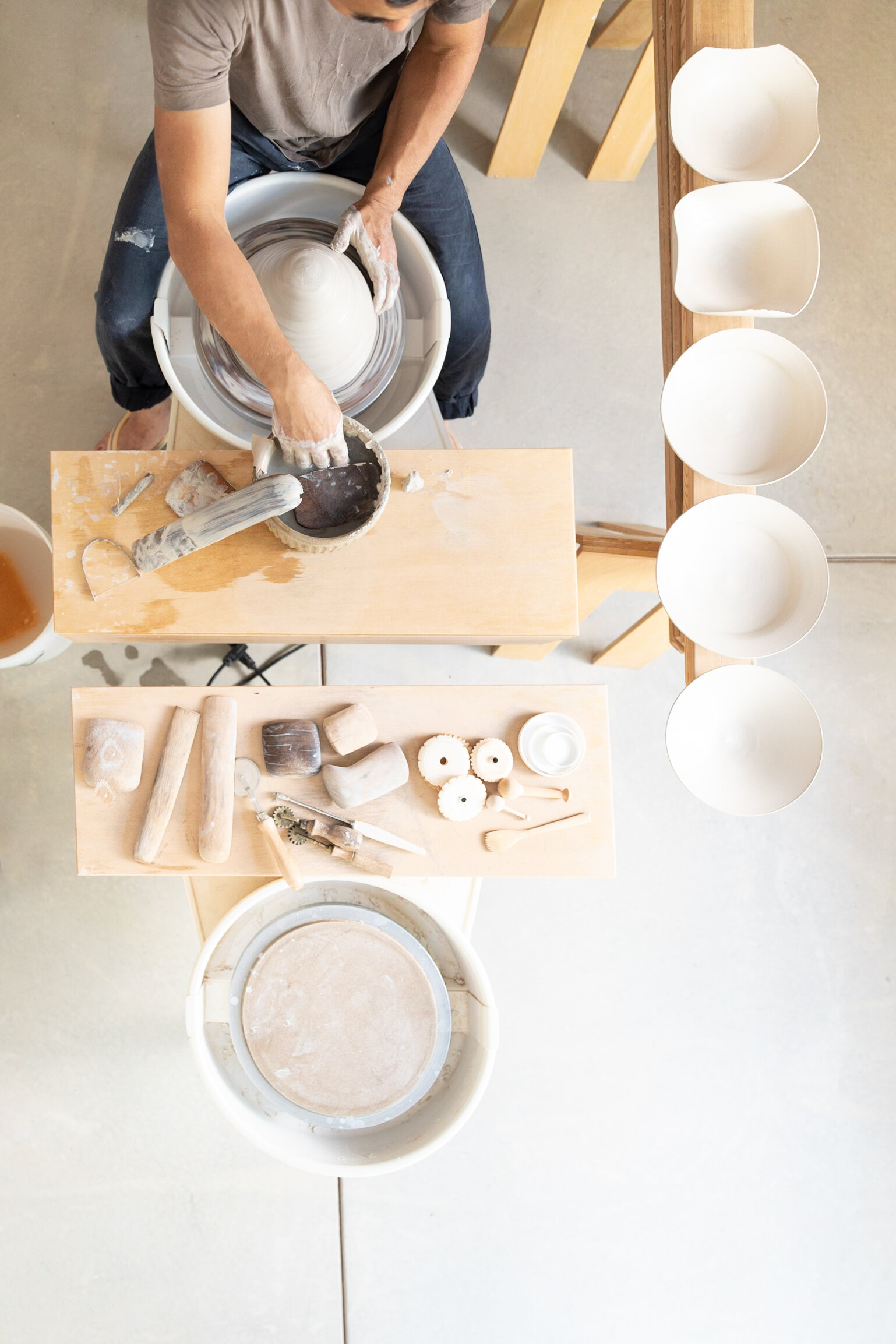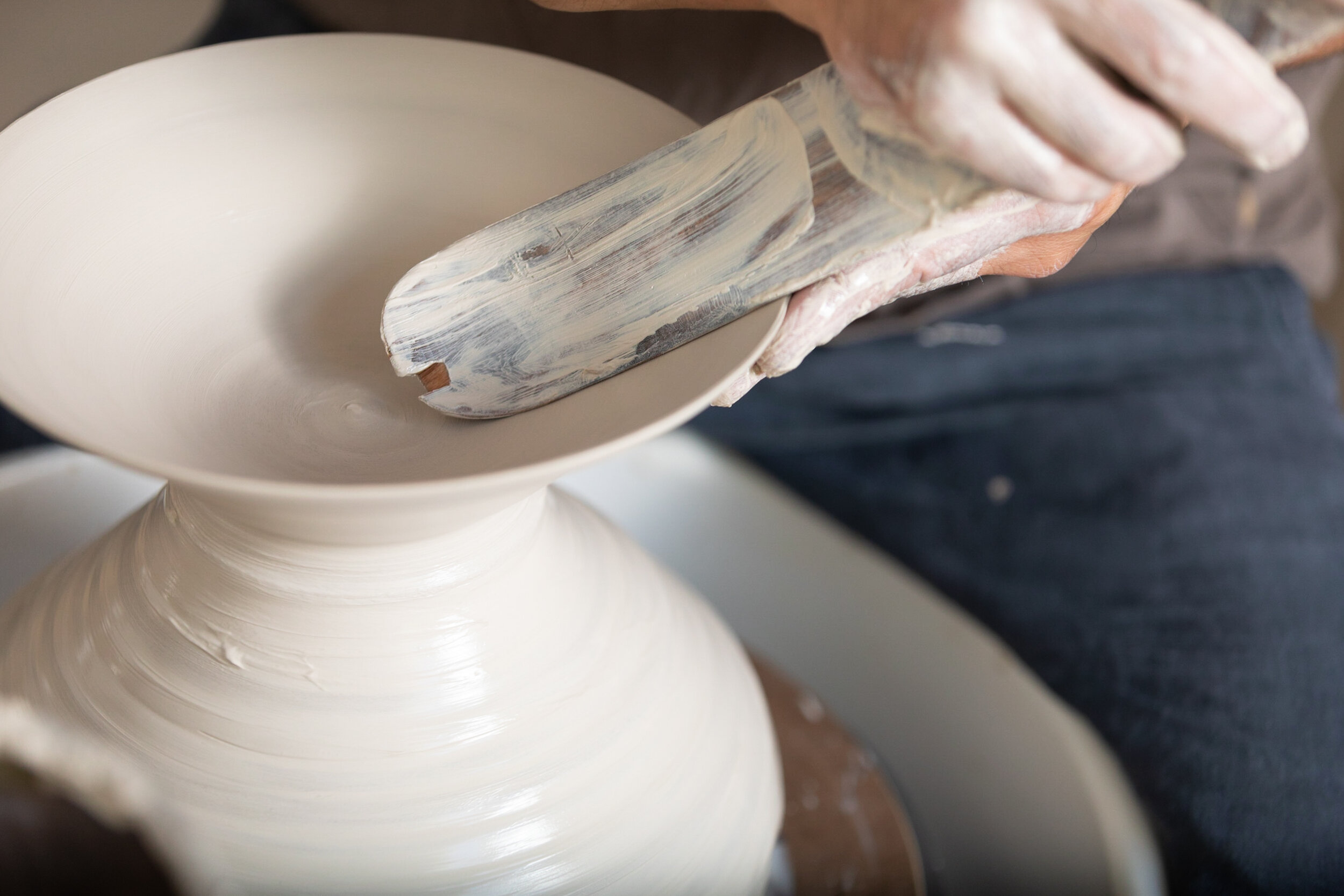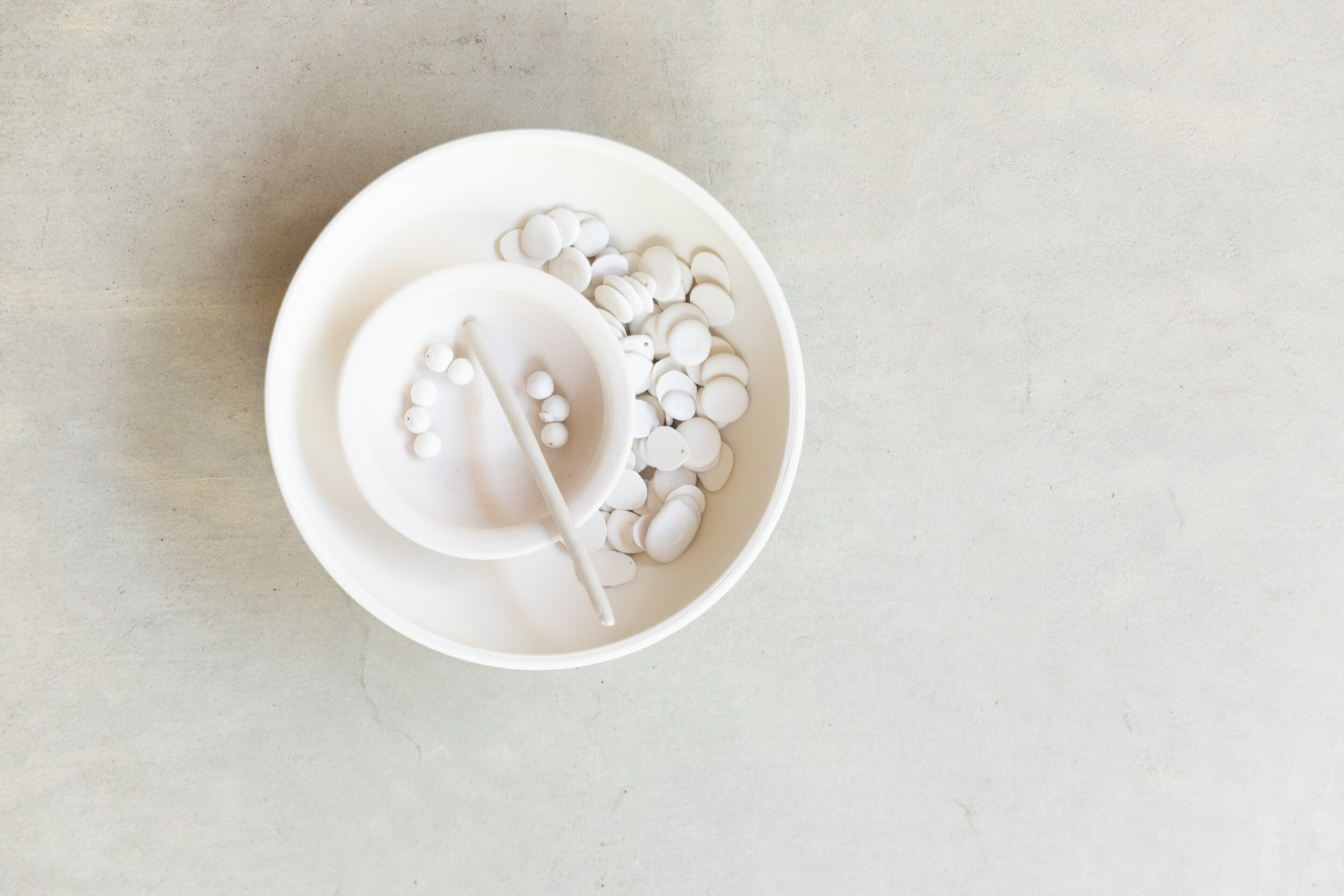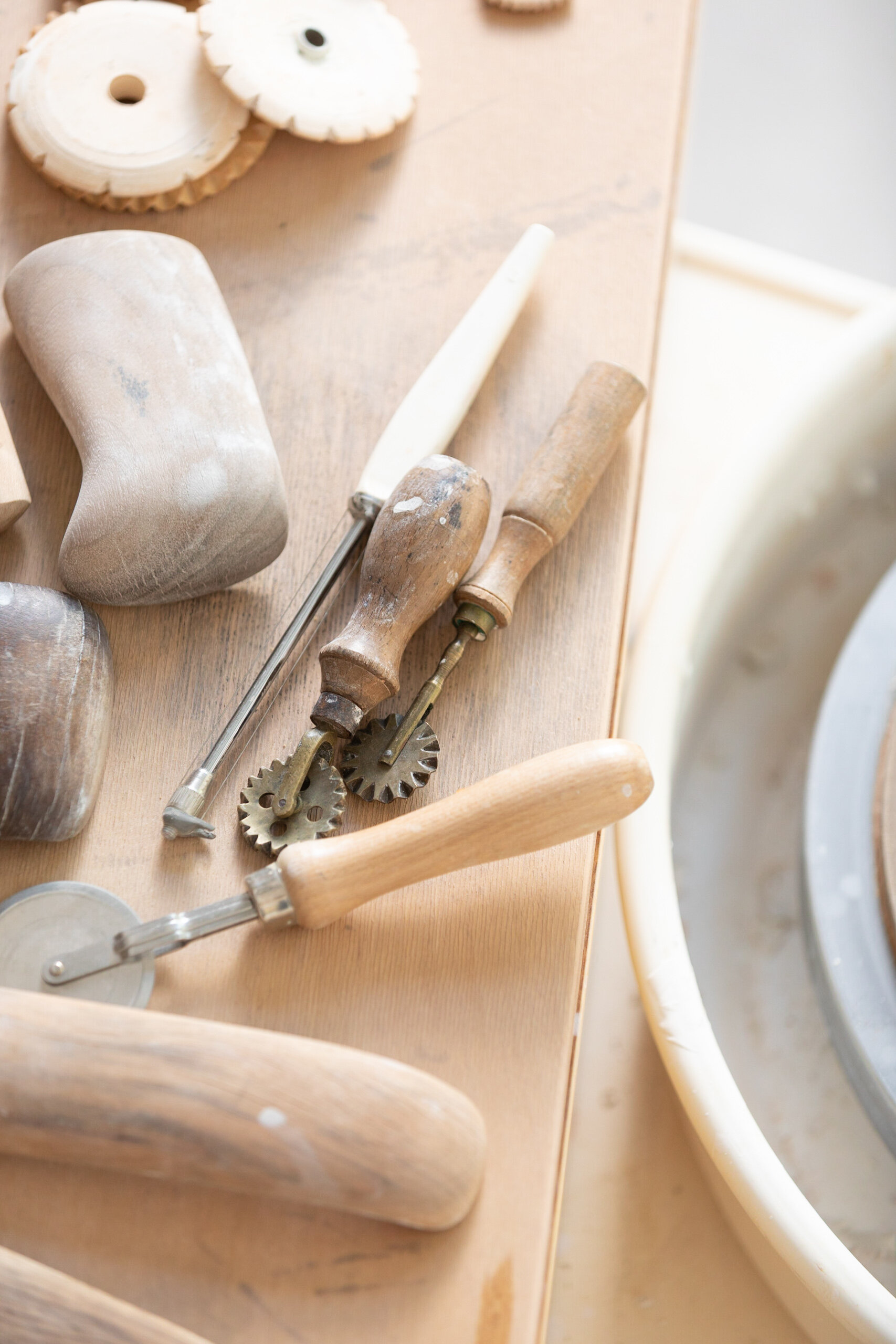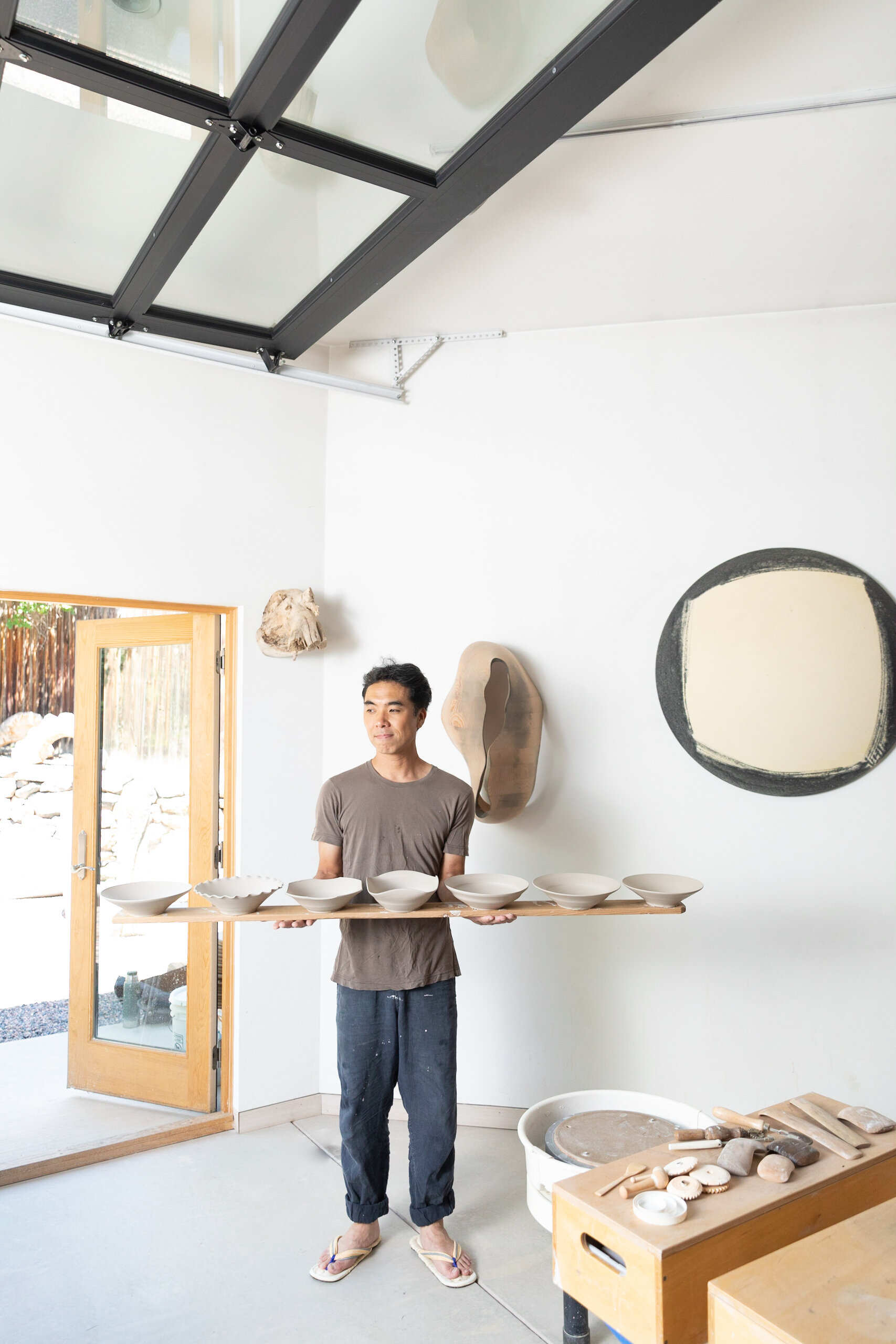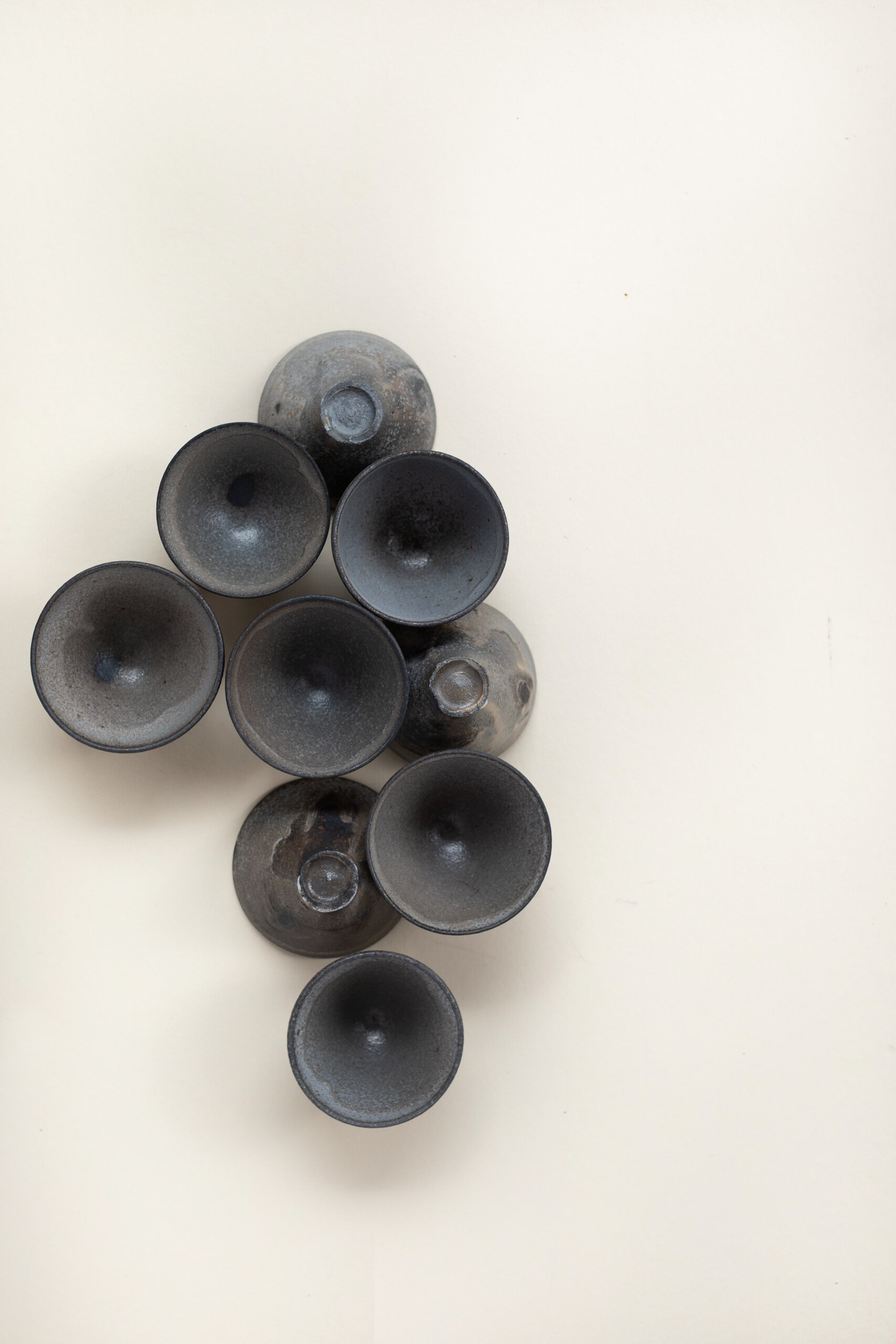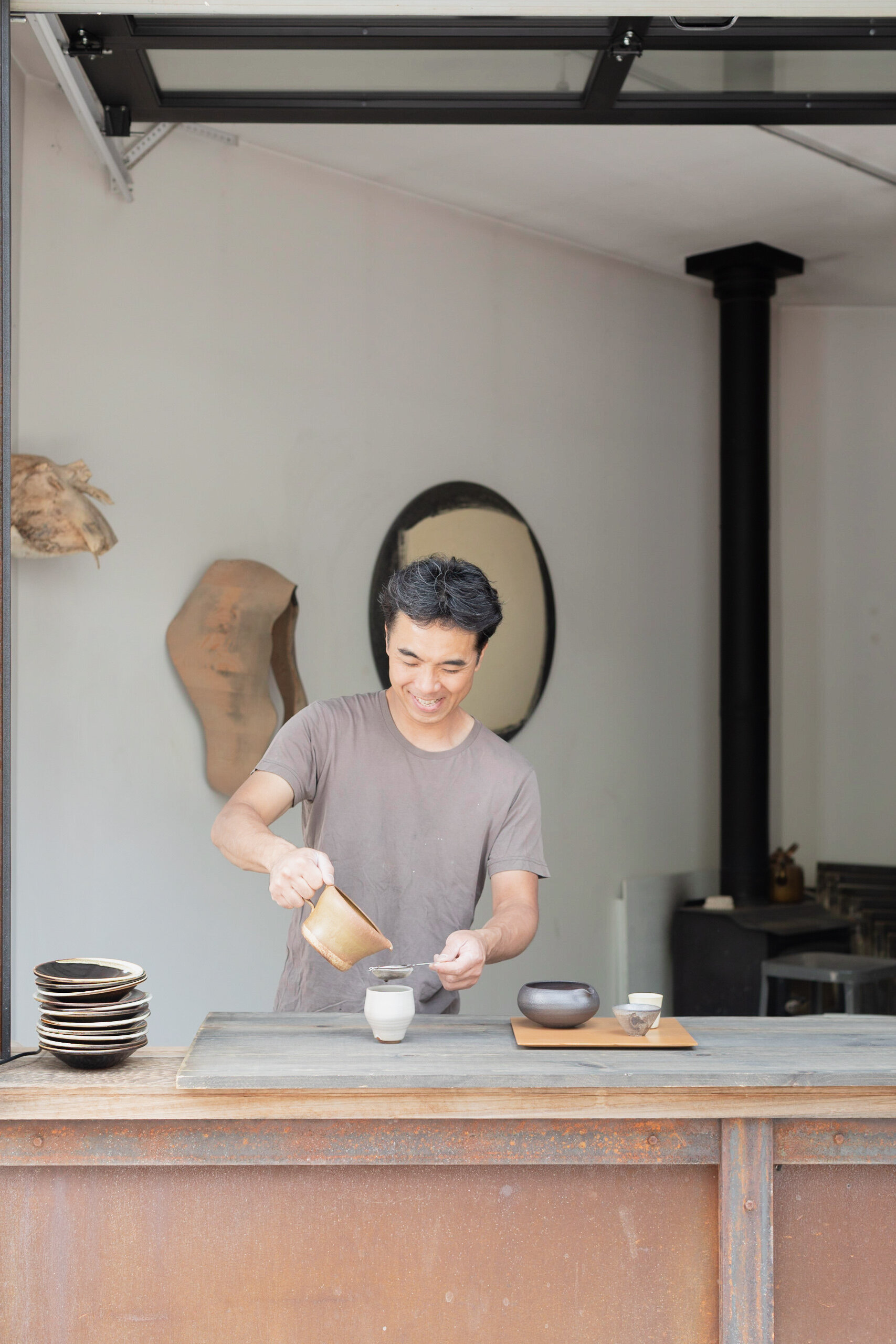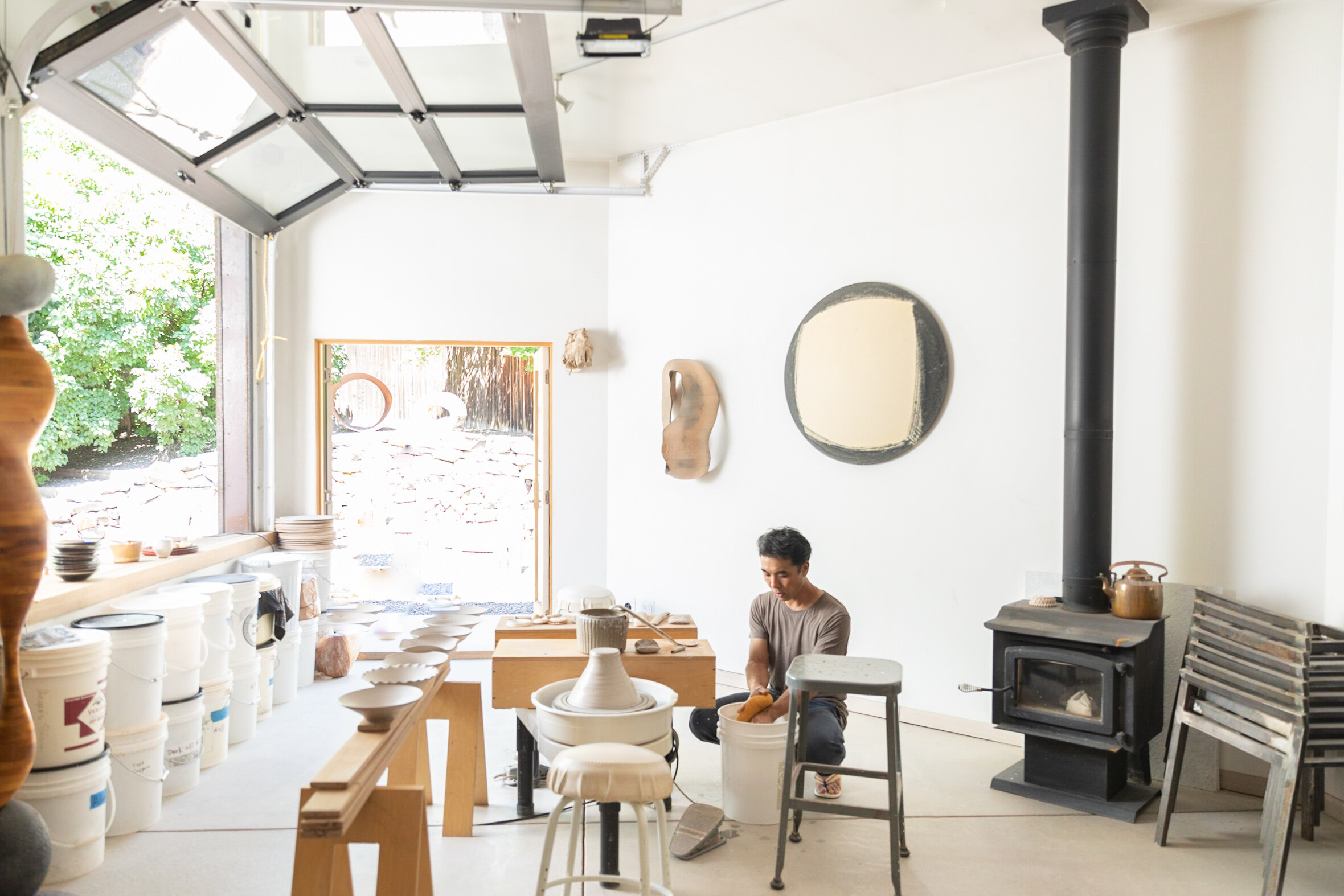Stepping into Kazu Oba’s airy, minimalist studio in Colorado, he welcomed me wearing a casual t-shirt and jeans, his hands already sporting a light layer of clay. The workshop’s clean lines and white walls contrast beautifully with the star of the show: Oba’s pottery. A blend of found objects and natural shapes, these pieces resonate with soft, organic forms and rich neutral tones. It is immediately clear why Oba has received accolades across the country for his ceramics.
I was struck not only by Oba’s unique creative vision, but by his humility. As a fellow immigrant to Colorado working in the arts, I connected with his experience arriving here years ago and working hard to forge his own path as an artist. Whether you’re coming from Argentina like me or Japan, as Oba did, migration can be both disorienting and inspiring for artists, shaping not only their perspectives, but their creative practices. In Oba’s case, the sculptor has merged the natural and the manmade, the Japanese aesthetic and that of his adopted home, into a resonant whole.
Kazu owns a studio along with his partner, also potter and jewelry designer, Yuka and their daughter Maya. Visit their O’baware studio’s website, here.
Full Article on Boulder Lifestyle Magazine
Text by Ben Wiese
Lining the perimeter of Kazu Oba’s house are many different pieces of tree trunks. By being in the right place at the right time and having an interest in such a thing in the first place, Oba has quite the collection of raw materials, coming from a total of eleven different places.
Oba has spent the better part of the last thirty years becoming a world-renown potter and sculptor, but it was a number of years before Oba discovered that path. For the longest time, it was about finding out what truly connected him to his roots and what his part was in life.
For his work, Oba largely draws from traditional tea ceremonies while apprenticing in Japan, as well as working in the restaurant business for fifteen years. He connected with the importance of the actual pottery and dishware—the feel, the weight, the rim of the cup—as well as what it represented within Japanese food culture.
“I started becoming more interested in the dishes the food is served on. In Japan, it’s very common in a natural course of events, where decent chefs would start going to pottery shows or to visit different pottery towns of Japan.
“You would start going to those and appreciate different types of pottery. Sooner or later, if you don’t get connected with a potter, you might start taking classes with the idea that one day you’d be serving your food on your pot.”
Though ranging in quirk and appearance, Oba’s pottery and dishware – both in the Western world and Japan—is predicated on functionality and practicality. His sculptures, on the other hand, are less straightforward and more unpredictable.
Primarily comprised of found materials in intriguing shapes and with unusual angles, Oba’s work is often a marriage between preserved natural beauty and humanity—the latter being metaphorically and occasionally physically conveyed by adding “the rim”—the part of the pottery that a person makes direct contact with.
“With pottery, it’s something you interact with a few times a day. I worked in a restaurant, so the interest in pottery in me grew naturally. I make sculptures, different series, different sculptures and they may mean different things, but if I were to pick a couple just to explain what they are, maybe it could make sense, how they’re related.”
It wasn’t a lifelong dream of Oba’s to become one of the great pottery artist and sculptors of the United States. He fell into that almost by accident. [Oba first knew he wanted to come to America after seeing the movie Grease, but that’s probably for another time.]
But upon moving to Colorado, putting himself through school, and briefly studying to be a Buddhist Monk at a Monastery, Oba determined that his extremely rare skillset—making incredibly balanced and functional dishware and transforming found materials into works of art—was ideal for participating in something much bigger than himself.
Oba happily invites people to attempt to define the meaning of his work. He’ll even flip a piece upside down if it will help someone better understand what they’re looking at.
Casual and humble, Oba cares for all of his work the same way: down to the little details one might only notice while sipping on a cup of tea.
“Personally I don’t really see the difference between sculptures and these 3D objects, or what we call pottery. I don’t necessarily devalue one or the other, and I think it’s not for me to say anything about crafts versus art. It’s this topic I’ll let the scholars and writers talk about that. I just make what I like to make.”
